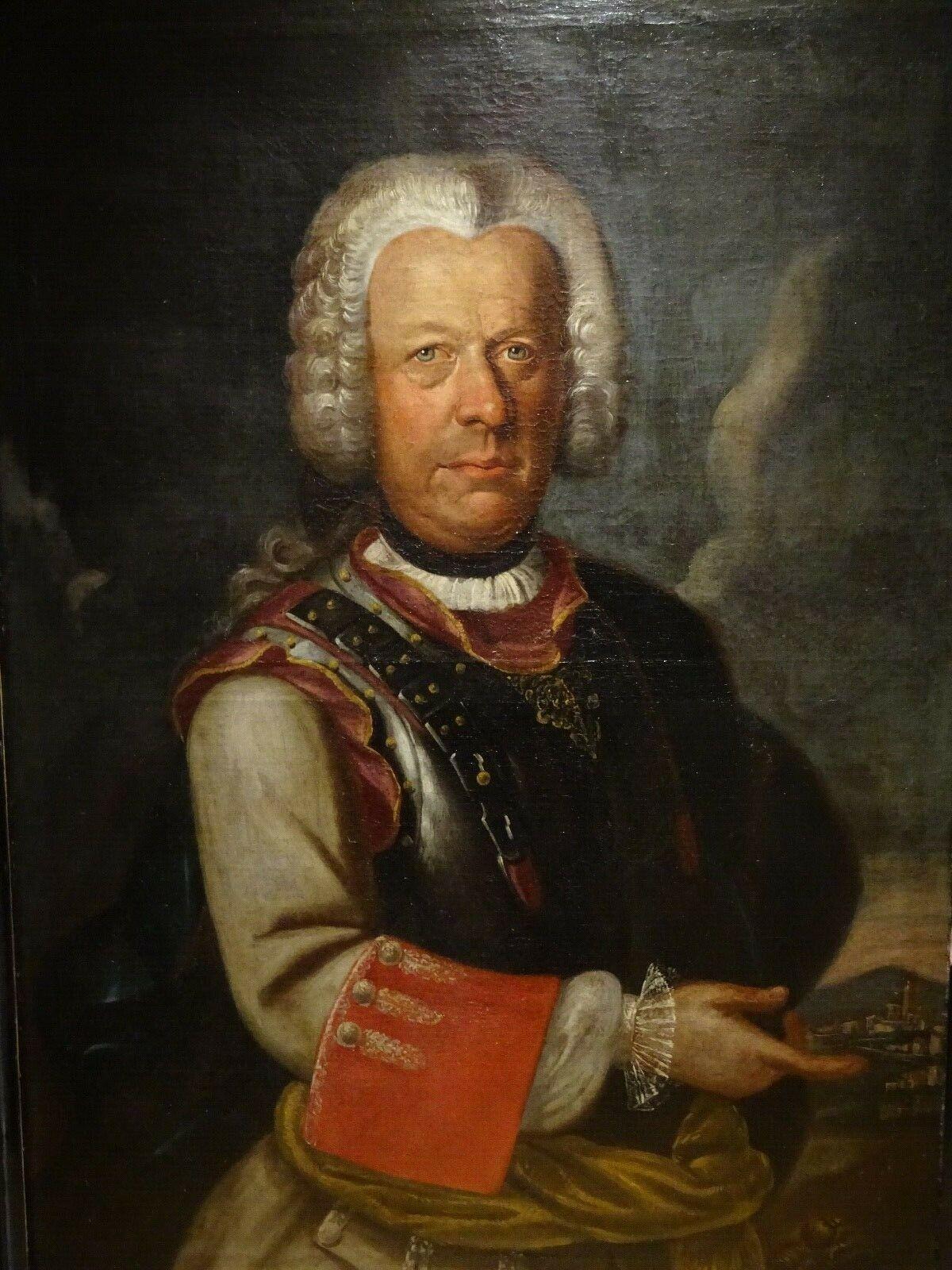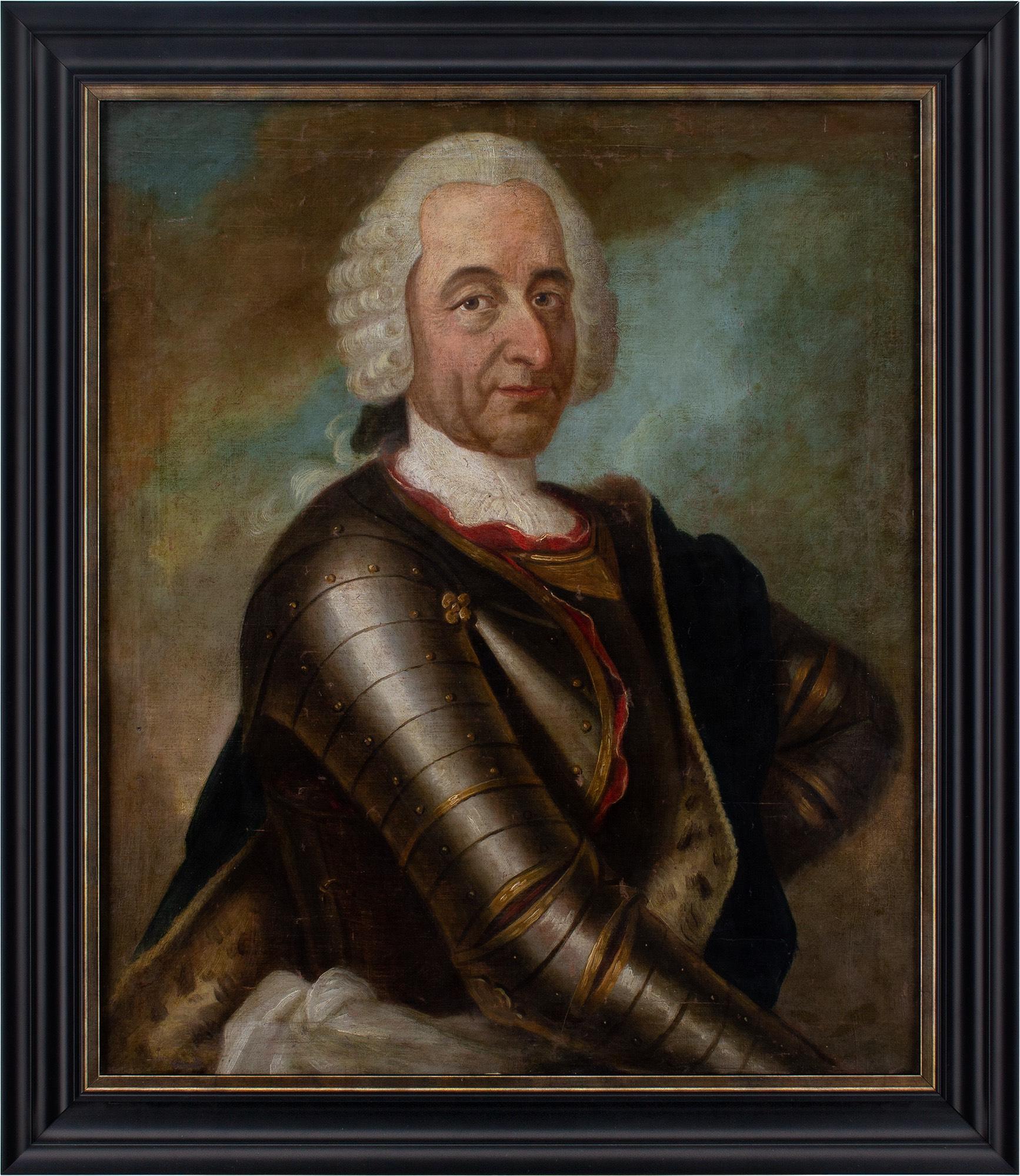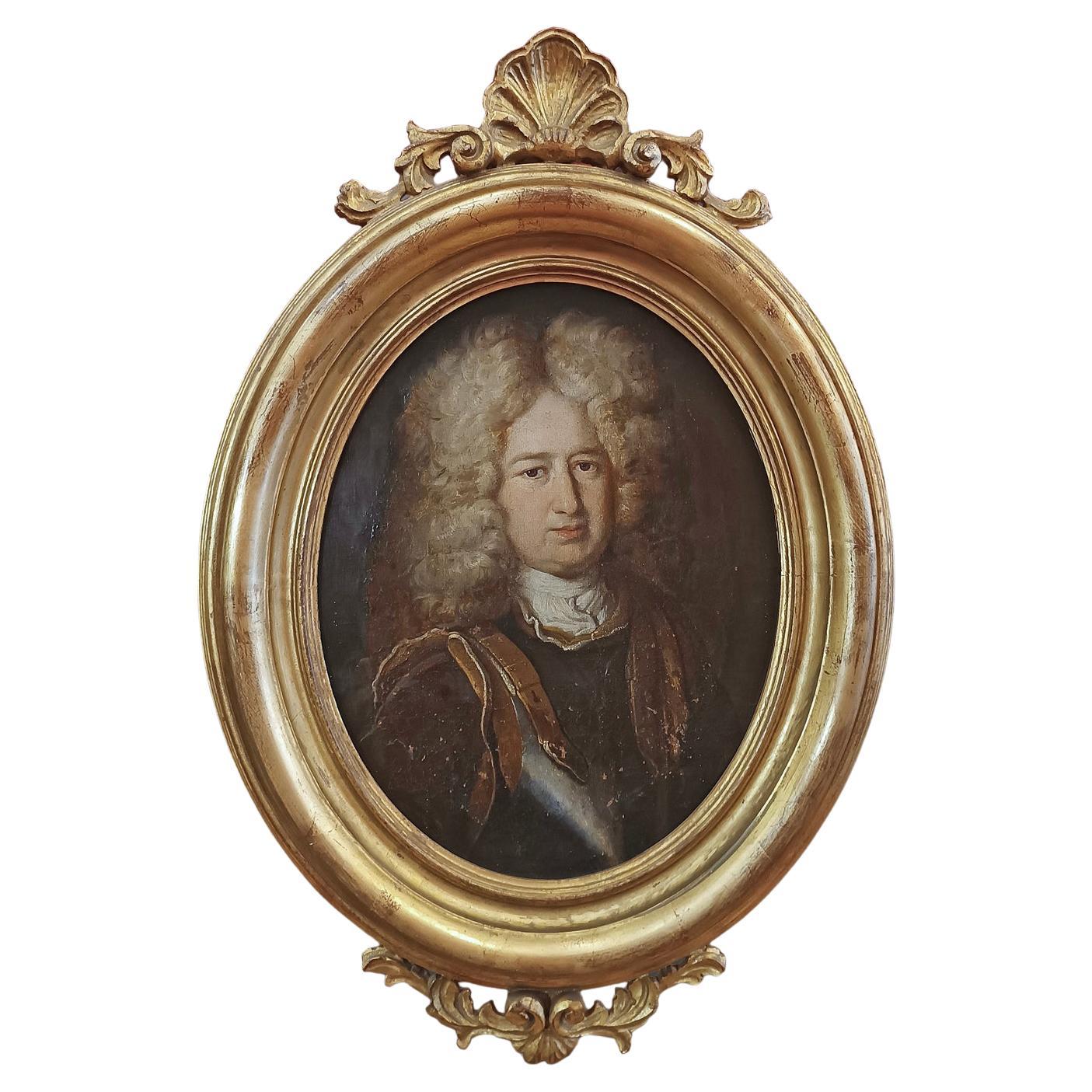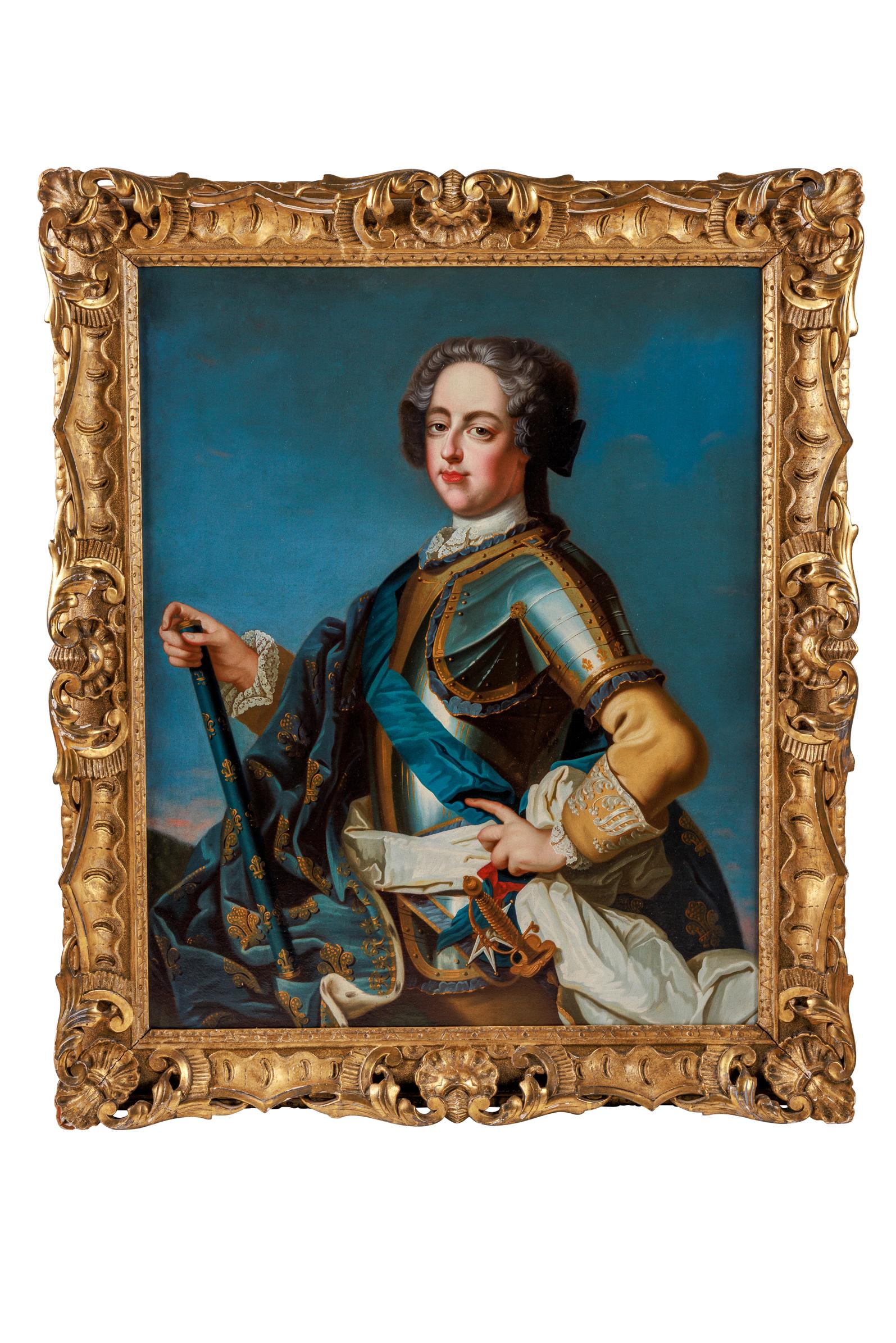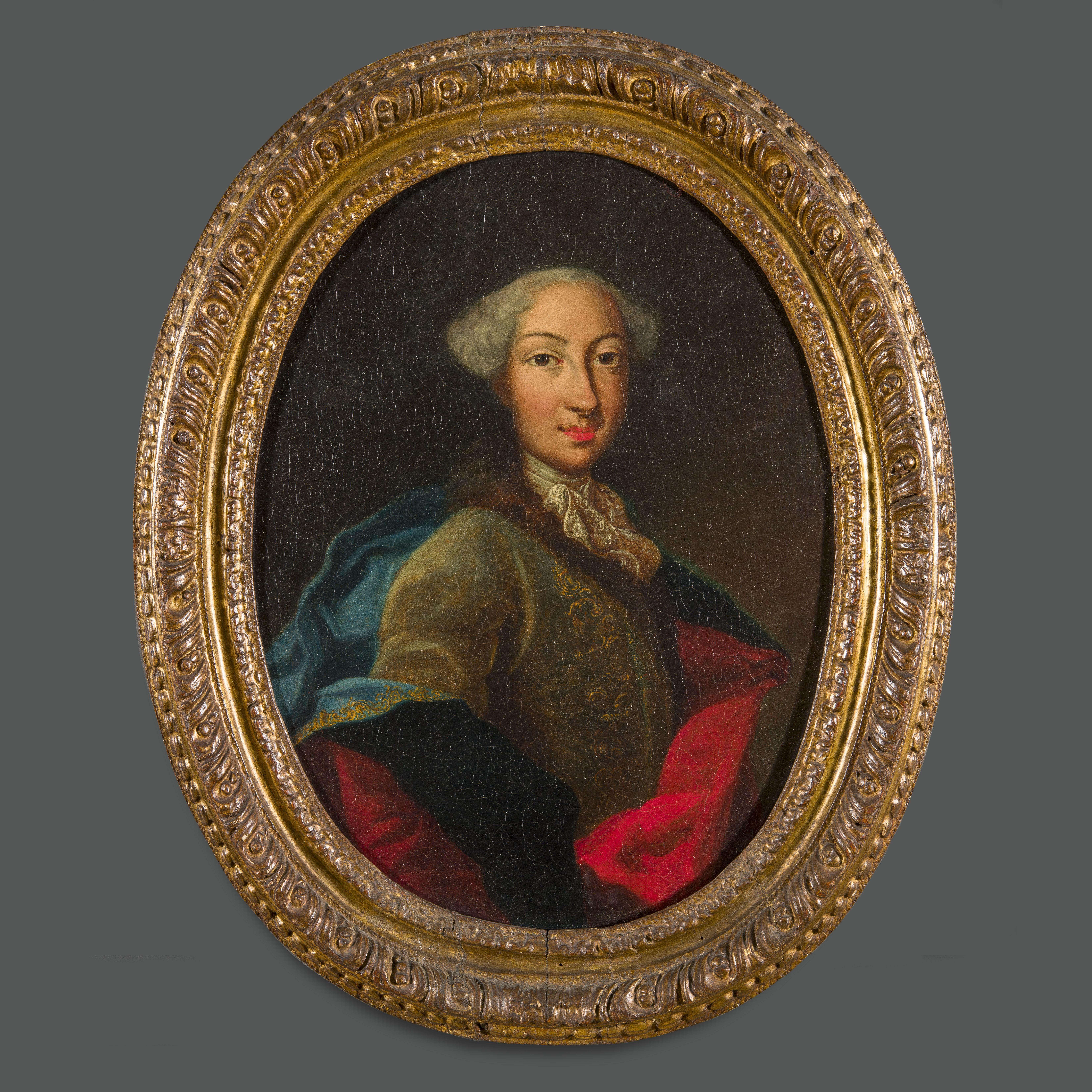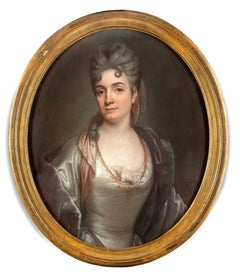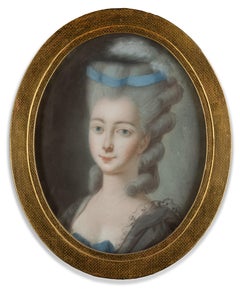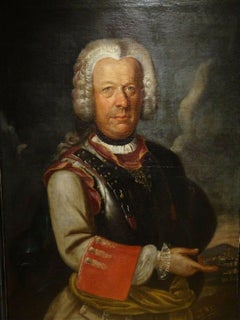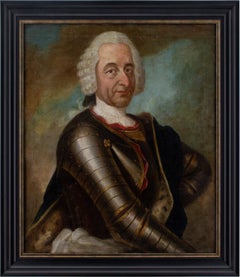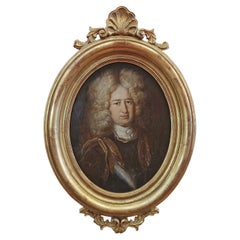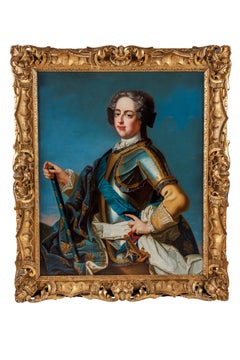Items Similar to Portrait of a noble Gentlemen, Max Franz of Austria, Archduke, Meytens, Habsburg
Want more images or videos?
Request additional images or videos from the seller
1 of 7
Portrait of a noble Gentlemen, Max Franz of Austria, Archduke, Meytens, Habsburg1770
1770
$10,830.12
£8,018.11
€9,000
CA$14,995.06
A$16,371.02
CHF 8,582.65
MX$198,832.29
NOK 107,183.37
SEK 101,209.69
DKK 68,518.92
About the Item
Portrait of Max Franz as coadjutor of the Teutonic Order
Oil on canvas, 54 x 45 cm
Maximilian Franz of Austria
Austrian Archduke Maximilian II. Franz, was Grand Master of the Teutonic Order from 1780 and Elector and Archbishop of Cologne and Prince-Bishop of Münster from 1784 to 1801. He was influenced by the Enlightenment and sought to implement reforms in various political fields. In the course of the First Coalition War, his territories on the left bank of the Rhine were occupied and later incorporated into France. Maximilian Franz did not live to see the implementation of secularization and thus the end of the electoral state.
It is quite possible that the badge in the painting represents the cross of the **German Order**. The Teutonic Order (Ordo Teutonicus) used a black cross on a white background as a symbol, and its members - especially high-ranking members such as the Grand Master - wore badges that were often designed in this shape.
The cross on the man's chest has the typical shape of a so-called paw cross, which is often associated with the Teutonic Order. The Order used a black paw cross as the central element of its coat of arms and insignia.
The badge is prominent and placed on the sitter's chest, which was typical for high-ranking members of the Order. The Teutonic Order was closely associated with the nobility, especially in the late 18th century, and nobles who were members of the Order often wore their badges proudly visible.
Maximilian Franz of Austria, the youngest son of Maria Theresa, was indeed Grand Master of the Teutonic Order from 1780, so it would be historically correct for him to wear such a badge, and the cross would indicate his position in the Teutonic Order.
In addition to the cross, the richly decorated uniform could also indicate that the person depicted held a prominent position in the military or in a knightly order. Such uniforms and medals were common for members of the Teutonic Order, especially high dignitaries such as the Grand Master.
The badge on the chest does indeed look very similar to the symbol of the Teutonic Order, suggesting that the man in the painting was either a high-ranking member or possibly even the Grand Master of the Order. If the painting does indeed show Maximilian Franz of Austria, the badge would be absolutely appropriate and authentic.
- Attributed to:Martin van Meytens (Stockholm 1695 - Vienna 1770), workshop of (1695 - 1770)
- Creation Year:1770
- Dimensions:Height: 21.26 in (54 cm)Width: 17.72 in (45 cm)
- Medium:
- Movement & Style:
- Period:
- Framing:Framing Options Available
- Condition:
- Gallery Location:Greven, DE
- Reference Number:1stDibs: LU1550215348032
About the Seller
4.8
Platinum Seller
Premium sellers with a 4.7+ rating and 24-hour response times
Established in 2011
1stDibs seller since 2021
30 sales on 1stDibs
Typical response time: 1 hour
- ShippingRetrieving quote...Shipping from: Greven, Germany
- Return Policy
Authenticity Guarantee
In the unlikely event there’s an issue with an item’s authenticity, contact us within 1 year for a full refund. DetailsMoney-Back Guarantee
If your item is not as described, is damaged in transit, or does not arrive, contact us within 7 days for a full refund. Details24-Hour Cancellation
You have a 24-hour grace period in which to reconsider your purchase, with no questions asked.Vetted Professional Sellers
Our world-class sellers must adhere to strict standards for service and quality, maintaining the integrity of our listings.Price-Match Guarantee
If you find that a seller listed the same item for a lower price elsewhere, we’ll match it.Trusted Global Delivery
Our best-in-class carrier network provides specialized shipping options worldwide, including custom delivery.More From This Seller
View AllPortrait Johann Theodor Bavaria, Son of Prince Elector, by Joseph Vivien, Rococo
By Joseph Vivien
Located in Greven, DE
Portrait of Johann Theodor of Bavaria (1703-1763)
by Joseph Vivien
Johann Theodor of Bavaria (* September 3, 1703 in Munich; † January 27, 1763 in Lièg...
Category
18th Century Rococo Portrait Paintings
Materials
Canvas, Oil
J Haid, Martin Van Meytens, Engraving, Portrait Count Ferdinand Plettenberg
Located in Greven, DE
Johann Jakob Haid (1704-1767), engraver
Johann Stenglin (1715-1770), engraver
Martin van Meytens (1695-1770), inventor
Ferdinand Count of Plettenber...
Category
18th Century Baroque Portrait Prints
Materials
Engraving
Portrait Old Master, Joseph Vivien, Mme Silvestre, French Rococo, Pastel
By Joseph Vivien
Located in Greven, DE
The portrait shows Mme Silvestre.
Born in Paris, Silvestre was the daughter of Charles-Antoine Hérault and his wife Marie-Geneviève, who were her first teachers. In 1706 she married the painter Louis de Silvestre, moving with him in 1716 to Dresden. The couple's daughter Marie-Maximilienne became a pastellist. Silvestre died in Dresden, the year before her husband retired and returned to Paris. Her surviving pastels show the influence of Rosalba Carriera...
Category
18th Century Rococo Portrait Paintings
Materials
Oil Pastel, Gouache
French Art, Rococo Portrait, Oval, Pastel, Portrait of a Lady, Circle of Vivien
Located in Greven, DE
French School, Portrait of a Lady, Rococo, 18th Century, Fine drawing in Pastel/ Oil Pastel on Paper in the style of Vivien. The Lady might be a woman from Marie Antoinette's Court. It is part of a Pendant (see the other listing with the portrait of Queen Marie Antoinette...
Category
18th Century Rococo Portrait Drawings and Watercolors
Materials
Paper, Oil Pastel, Gouache
$6,743 Sale Price
72% Off
Portrait of a Boy, John Closterman, Large English Portrait Art, Old Master
By John Closterman
Located in Greven, DE
John Clostermann
(Osnabrück 1660 - 1711 London)
Portrait of a boy, maybe Charles Hinde
Oil on canvas, 61 x 74,6 cm
John Closterman (also Klosterman) was a portrait painter of the late 17th and early 18th centuries. He primarily portrayed English noblemen and European aristocratic families. His father was already an artist and he trained his son. In 1679 he went to Paris and studied with Francois de Troy. In 1681 he was in London and worked for the artist John Riley, whose studio he took over after his death. In 1696 he was invited to the Spanish court...
Category
17th Century Baroque Figurative Paintings
Materials
Canvas, Oil
French School, Portrait of a Lady, Actress, Young Woman, French , Rococo, Oval
Located in Greven, DE
French Art
Rococo
Portrait of a Woman, Young Lady, perhaps an actress
Category
18th Century Rococo Figurative Paintings
Materials
Canvas
You May Also Like
Portrait Of A Piedmont Nobleman & Military Officer, House Of Savoy, early 18th c
Located in Blackwater, GB
Portrait Of A Piedmont Nobleman & Military Officer, House Of Savoy, early 18th century
Italian School
Fine large 18th Century portrait of a Piedmont ...
Category
18th Century Portrait Paintings
Materials
Canvas, Oil
Mid-18th-Century German School, Portrait Of An Aristocrat In Armour
Located in Cheltenham, GB
This mid-18th-century half-length German portrait depicts a middle-aged aristocrat wearing armour and a wig.
Despite his heavily-clad appearance, it’s likely that this rather noncha...
Category
1750s Old Masters Portrait Paintings
Materials
Canvas, Oil
EARLY 18th CENTURY PORTRAIT OF THE DUKE OF METERNICH
Located in Firenze, FI
Beautiful oval portrait, oil on canvas, set in an oval carved wooden frame gilded with pure gold leaf, with the upper and lower sections decorated with plant curls and a shell. The b...
Category
Antique Early 18th Century Italian Louis XIV Paintings
Materials
Canvas, Wood
After Jean-Baptiste Van Loo, Portrait of King Louis XV of France (1710-1774)
Located in Queens, NY
After Jean-Baptiste Van Loo, A Portrait of King Louis XV of France (1710-1774)
A magnificent quality three-quarter length portrait of King Louis XV of France and Navarre, painted in the 18th century after Jean-Baptiste Van Loo.
Oil on canvas, in the original carved and gilt wood frame.
Canvas: 40" high x 32" wide
Frame: 46.5" high x 39" wide
Very good condition, ready to hang. No damages noted.
The present composition follows a portrait of Louis XV painted by Jean-Baptiste Van Loo in 1726-1727, today in Versailles. (Oil on canvas. 198.5 by 143 cm. Inv. no. MV 6942.)
There were several full-length portraits painted by Van Loo of the young Louis XV, and all were executed in the years of or after his majority, 1723, when he took full control of government, wresting power from the Régent, his great-uncle Philippe, Duc d'Orléans. A slightly larger version (205 by 171 cm), in which the pose and surrounding paraphernalia mirrors that of the present work, is in the Château de Versailles, while another, in which Louis stands more front-on, his pointing right index-finger now tucked in, and with a different background arrangement, is also in Versailles. Further versions of this latter are in Nice, Musée Chéret and the Musée de Perpignan.
The composition of all of these full-lengths would appear to derive from Van Loo's large equestrian portrait of Louis XV, painted in collaboration with Charles Parrocel, which was commissioned in 1723 by the Surintendance for Charles de Lorraine. Louis is depicted in similar armour and costume, astride his horse, similarly turned three-quarters to the left and his right arm outstretched. Most subsequent depictions of Louis followed this original design, including, for example, Carle Van...
Category
18th Century Portrait Paintings
Materials
Oil, Canvas
18th Century Italian Portrait Credited to Maria Giovanna Battista Clementi
Located in Roma, IT
18th Century Italian Portrait Credited to Maria Giovanna Battista Clementi
The painting probably depicts a young nobleman of Savoy court and is characterized by its courtly setting. ...
Category
Mid-18th Century Old Masters Portrait Paintings
Materials
Oil, Canvas
18th Century Portrait of a Nobleman
Located in Scottsdale, AZ
18th Century Portrait of a Nobleman. Beautiful painting purchased in France. Age appropriate wear, see detailed photos or message us with any questions.
Inner Frame Dimensions: Hei...
Category
Antique 18th Century French Louis XVI Paintings
Materials
Wood, Paint
More Ways To Browse
Antique Badge
Austrian Oil Painting
German Cross
Paintings Of Austria
Portrait Of Noble
Austrian Rococo
Vienna 18th
Portrait Habsburg
Society Lady Painting
The Penitent Magdalene
16th Century Unknown Portrait
17th Century Portrait Of A Noblewoman
Artist Smock
Beethoven Painting
Bloch Julius
Circle Of Sir Godfrey Kneller
Crime And Punishment
Cubist Face Painting
